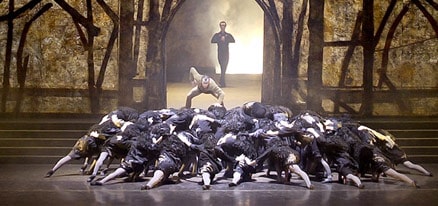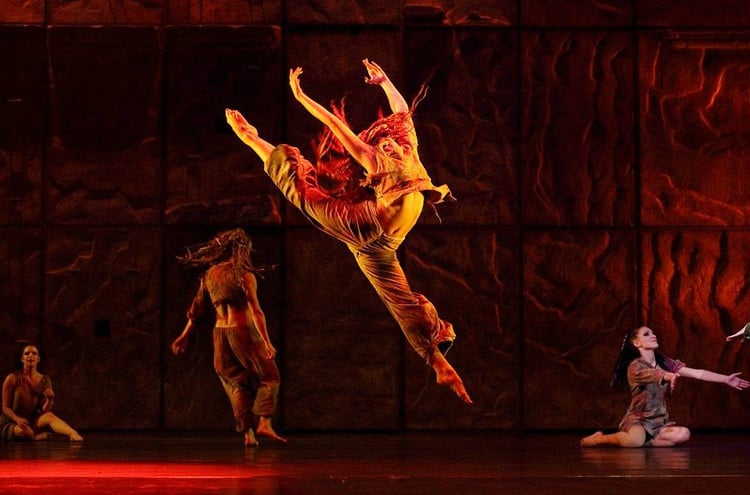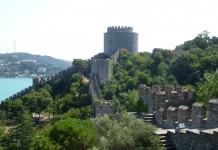“Belle” is the only word I know that suits her well
When she dances oh, the stories she can tell….
She dances naked in my soul and sleep won’t come
And it’s no use to pray these prayers to Notre Dame…
How would you approach such beauty unattainable, – exempted from you for reasons beyond your control, but triggering love, lust, passion, infatuation forbidden?

Frollo, the archbishop of the Notre Dame Cathedral, befalls to his unquenched desires, unleashing a wrathful, manipulative twist to his persona. He looks beyond his errs and shifts the blame to Esmeralda. “There’s a demon inside her who came from hell, and he turned my eyes from god, and oh, I fell,” he reasons. He stalks those around her, attempts murder, orchestrates a mock trial, and leads the beauty to her doom.
Phoebus, the seemingly benevolent hero turned antoganist, and the handsome, charming aristocrat and general, is in a dilemma: “Belle, even though her eyes seem to lead us to hell, she may be more pure, more pure than words can tell,” he observes. Yet, even though he does see the benevolence in her, he continues on “but, when she dances feelings come no man can quell.” He openly declares his dilemma as he begs his fiance to “let him one time be untrue,” because “to be with her he’d let the devil take him whole.”
The hunchbacked Quasimodo, Frollo’s beacon, is the benevolent hero, and the only among the men to vow to protect her for all time, under all circumstances. He rebels against his fate that has given him the soul and inner beauty to call for the love of Esmeralda, but a disfigured appearance that makes this desire impractical.
The three love-stricken men each sing with their own psyche of the beauty “dancing naked in their souls,” and they unfold a drama that has become a timeless classic: the Notre Dame de Paris.
The Notre Dame de Paris is the third and final of the Broadway selections of the Zorlu Center PSM this year. And yes, it is the same Notre Dame de Paris that we remember from the song Belle of the year 2001. It is the same musical that has performed in Broadway and the world over. And the same musical to have entered the Guinness Book of World Records as the most successful first year of a musical… It is a performance to which I had been looking forward for months. And even though I had had some initial hesitations – based on the tragic story-line of the Victor Hugo classic – that the musical would be depressing, heavy stuff, these turned out to be in vain. From the very second that the curtain drew, to the last moment of the final scene, the Notre Dame de Paris was the most dynamic, energetic, and entrancing performance I have ever experienced.
It fused one of the most immortal works of literature with theatrical artistry, combining a timeless story of the human experience, love, strife, benevolence and treachery with great artistry of the musical note, stage design, choreography, and acting. The stage design was not overdone, but complicated and ingenious. A grand wall made up the background, several stories high and segmented into cubicles that each opened up as needed to reveal the character in focus. In the song “the bells” – the scene where Quasimodo refuses to ring the bells of Notre Dame until the missing Esmeralda is found – giant bells were lowered from the ceiling, each with a dancer nestled into it, engaged in some dramatic acrobatics! The refugees sought asylum, and the bohemiennes exhumed free spirit, and each captivated and wowed the audience with a dynamic, vigorous choreography that fused modern dance, acrobatics, and high levels of energy and muscle power.

The musical also left permanent impressions on the soul with the social themes embedded into it. The outcast refugees seeking asylum and the bohemiennes personified social strife, class stratification, and prejudiced stereotyping. Frollo, the archbishop, was the persona of high, revered status and the symbol of goodness. Yet in reality, he was scheming and evil, and misused his power against the oblivious innocent. Phoebus was dashingly handsome, an aristocrat, and a revered officer. Yet, he was indecisive, fickle, and weak in character. Quasimodo, disfigured in looks, had the golden spirit. The musical depicted a story of tragedy from the 1500s. And it was made all the more moving to observe that even though the centuries elapsed had witnessed advances in technology, little ground had been made in ameliorating the human experience. Combined with the power of music, artistry of drama, impressive stage design, and a choreography to vow, the Notre Dame de Paris left the audience with a permanent imprint on the soul. I sure do hope that you have had the chance to attend one of the sixteen performances at the Zorlu Center PSM. It was the highlight of my musical season.











[…] in that season alone, they have brought before me such dream performances as the original Cats, Notre Dame, and Jose Carreras. And, it has introduced me to new names such as the Cuban ballet/dance group […]
[…] Zorlu Center PSM has done it again. Building on last season’s Cats and Notre Dame de Paris, they have kicked off the 2014-2015 season with another too-good-to-be-true performance: the […]
[…] performance history in Istanbul. Last year it hosted three Broadway shows: Jersey Boys, Cats, and Notre Dame de Paris. Moreover, it just finished a run of Disney’s Beauty and the Beast, another Broadway […]
[…] Opera never loses its appeal. Last year, while visiting the Zorlu Center PSM for a performance of The Notre Dame de Paris, I think to myself, “Wouldn’t it be so very awesome if the PSM brought the Phantom of the […]